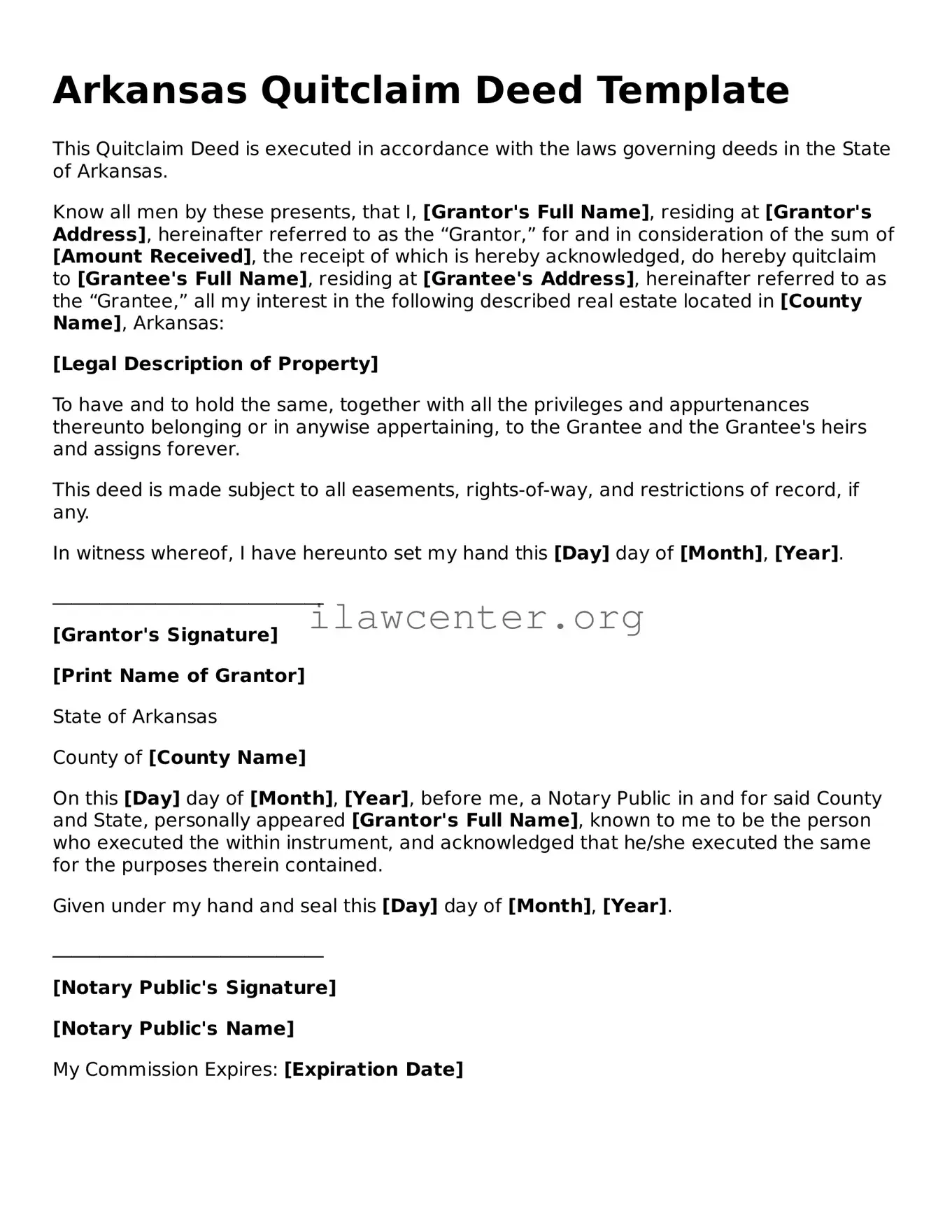Instructions on Utilizing Arkansas Quitclaim Deed
Once you have the Arkansas Quitclaim Deed form in hand, you can proceed to fill it out accurately. Ensure you have all the necessary information about the property and the involved parties ready. Here’s how to fill out the form step by step.
- Start by entering the date at the top of the form.
- Write the name of the grantor (the person giving the property) in the designated space.
- Provide the address of the grantor following their name.
- Next, enter the name of the grantee (the person receiving the property).
- Include the address of the grantee below their name.
- List the legal description of the property. This typically includes details like the lot number, block number, and county.
- Specify any additional information required under the section for consideration (what the grantee is giving in return for the property).
- Have the grantor sign the document. If there are multiple grantors, all must sign.
- Enter the printed name(s) of the grantor(s) beside the signature.
- Complete the notary section. The notary will confirm the identities of the grantor(s) and witness the signing.
After completing the form, double-check all entries for accuracy. A correctly filled and notarized Quitclaim Deed will need to be filed with the county clerk’s office in the appropriate county for it to take effect. Remember to keep a copy for your records.
